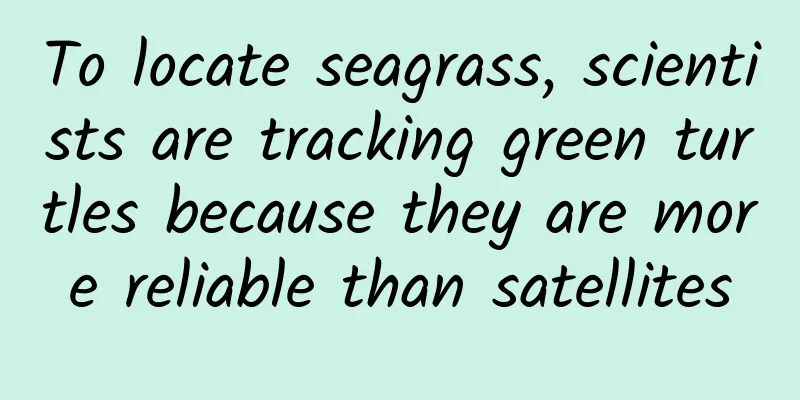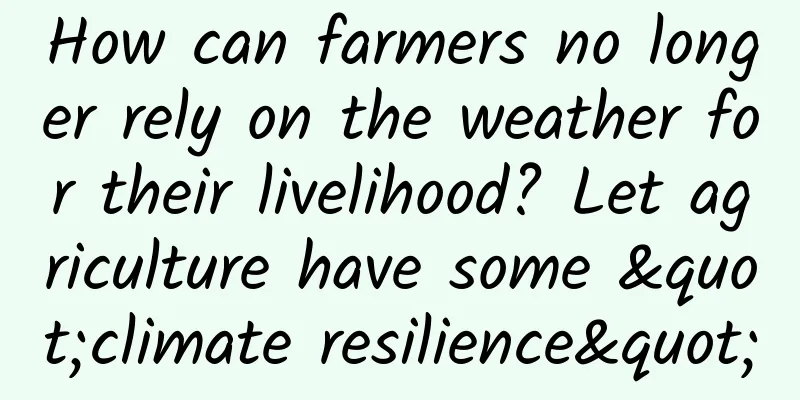To locate seagrass, scientists are tracking green turtles because they are more reliable than satellites

|
Seagrass, this lush oasis on the seabed, is like a haven for fish and crustaceans, providing them with a safe haven, while also playing an important role in improving water quality and reinforcing the seabed. However, due to the relative rarity and concealment of these underwater green areas, finding them has always been an extremely challenging task. But fortunately, a team of marine ecologists recently made a breakthrough discovery - sea turtles that feed on seagrass, like underwater hounds, have amazing positioning capabilities, which can guide researchers to find these hidden seagrasses more accurately than satellite images. This research result has been published in the Proceedings of the Royal Society B, which undoubtedly brings new hope and dawn to the protection and research of seagrass. A lush underwater oasis Seagrasses are not only a shelter for countless organisms in the marine ecosystem, but also a key link in maintaining ecological balance. Like green guardians in the ocean, they silently absorb carbon dioxide and convert it into blue carbon, which is semi-permanently stored on the seabed, making a huge contribution to the earth's carbon cycle. According to research, although seagrass patches only account for 0.2% of the total ocean area, they are able to undertake about 10% of the ocean's carbon burial activities each year, a figure that is enough to demonstrate its importance. However, with the continuous intensification of human activities, seagrass meadows are facing unprecedented threats. Coastal development, agricultural runoff, and activities such as bottom trawling are constantly eroding this precious green home. Therefore, understanding the exact location of these seagrass resources is of vital importance for formulating effective protection measures and maintaining their ecological service functions. Seagrass is a key link in maintaining ecological balance Scientists have long relied on satellites and remote sensing to map important habitats on land. However, when it comes to exploring mysterious underwater habitats, a host of technical challenges arise. Satellite technology is limited in detecting patches of seagrass at greater depths, as light can only penetrate a few meters below the water surface. Similarly, aerial images often struggle to accurately distinguish seagrass from other green underwater patches, such as lush macroalgae. To complicate matters further, most seagrasses prefer to grow in tropical waters, where widespread carbonate compounds, such as those found in coral and mussel shells, strongly scatter light, further obscuring the seagrass' presence and making it more difficult to observe from above. Together, these factors present unique obstacles to studying underwater habitats, requiring scientists to continually explore new methods and technologies to better understand and protect these valuable ecological resources. A team of marine ecologists recently pioneered a novel method to map seagrass, which is to track animals that find seagrass in nature - green turtles. This idea is not new. As early as 2022, scientists in the Bahamas tracked tiger sharks and surprisingly discovered the world's largest seagrass meadow. However, compared with tiger sharks, green turtles seem to have an advantage in mapping seagrass. Green turtles roam freely in vast areas of the ocean, and their diet consists almost entirely of seagrass. This characteristic makes them excellent guides for finding seagrass. More importantly, when green turtles come ashore to nest, researchers can relatively easily tag them with satellite transmitters to continuously track their movements. Excellent guide for finding seagrass On the vast Red Sea beaches of Saudi Arabia, a team of marine ecologists conducted a unique study. They carefully selected 53 green turtles and meticulously marked them on four different Red Sea beaches. To ensure that the study would not interfere with the natural reproduction of the turtles, they patiently waited until the turtles had finished nesting before marking them. Scientists chose the Red Sea as the research area because data on Red Sea seagrass is extremely scarce. This choice will help fill the research gap in the Red Sea seagrass ecology. Green sea turtle surfacing to breathe Next, these green turtles became the focus of scientists' tracking. Whenever they surfaced to breathe, the trackers installed on them would quickly transmit precise coordinate information to the satellite. In this way, researchers could always keep track of the turtles' whereabouts and track their activities continuously. The tracking work lasted for a whole year, and the researchers patiently recorded the swimming tracks of each turtle. Through careful analysis of these tracks, they found an interesting phenomenon: when the paths of green turtles crossed multiple times at the same location, there was often a lush seagrass meadow hidden at that location. In the study, green turtles showed amazing navigation ability, helping researchers mark 34 seagrass patches that had never been recorded before. One-third of these newly discovered seagrass patches were located in areas below 8 meters deep, a depth that is beyond the detection range of most satellite images. This fully demonstrates the unique advantages of green turtles in finding seagrass. They can dive into the deep sea and discover those green treasures hidden underwater. To verify the seagrass patches found by green turtles, the researchers traveled to 22 locations by boat for field surveys. Although they discovered that some locations were actually part of the same vast seagrass meadow, they carefully confirmed each location they observed and ultimately confirmed 14 independent and unique seagrass patches. In addition, the researchers compared 30 seagrass patches identified by the Allen Coral Atlas, the world's most complete coral map. Surprisingly, they found that only 40% of the sites actually had seagrass. This result further highlights the accuracy of green turtles in seagrass mapping, which is clearly a more reliable navigation tool than satellite images. When the researchers conducted in-depth explorations of each seagrass patch discovered by a green turtle, they not only focused on the ecological value of the seagrass, but also core sampled its sediments to scientifically estimate the amount of carbon stored in these patches. After careful calculations and analysis, they came to a surprising conclusion: the total amount of carbon stored in these seagrass patches can reach up to 4 teragrams, which is roughly equivalent to the amount of carbon dioxide emitted by 900,000 passenger cars each year. This discovery provides a new perspective and idea for addressing global climate change. Data holds huge potential Although green turtles have demonstrated remarkable capabilities in seagrass mapping, it is important to be aware that they are not omnipotent. As one researcher witnessed in Shark Bay, Western Australia, when fierce predators such as sharks lurk in the waters, green turtles may choose to avoid those originally dense seagrass patches for their own safety. This phenomenon shows that although the green turtle mapping method is effective, it also has certain limitations. Shark Bay, Western Australia While not foolproof, this method is a great way to get preliminary maps that researchers can use to quickly identify potential seagrass patches and then conduct further field visits to verify and confirm that these areas actually have seagrass. In addition, scientists are dedicated to studying the use of remote sensing technology to depict the overall picture of marine ecosystems. They point out that the tracking data of green turtles has great potential and can even be used to train advanced artificial intelligence algorithms. Through these algorithms, researchers can more accurately identify seagrass habitats from satellite images and further improve their understanding and protection of marine ecosystems. The scientists' goal is not limited to the current research results, they are eager to expand the scope of sea turtle tracking. They believe that if green turtles are marked in different corners of the world, these marine creatures are likely to reveal more unknown foraging areas to people, bringing new breakthroughs to the research and protection of seagrass ecosystems. More importantly, this technology is undoubtedly a great boon for countries that lack sufficient resources to conduct specialized seagrass surveys. Relying on green turtles as natural "guides", these countries can also more effectively protect their precious marine ecological resources and contribute to global ecological balance and sustainable development. |
<<: Are the flowers blooming early in Beijing? Will they bloom again in the spring?
Recommend
6 analysis methods to teach you how to quickly diagnose SEM account performance
Only data can tell whether your promotion account...
Are luxury goods suitable for TikTok marketing? ?
Last week, TikTok officially announced that its g...
4 cases to teach you how to use TikTok to promote products!
With the disappearance of the Internet traffic di...
Brand solutions, sustainable creativity
As the end of the year approaches, how should we ...
Fake traffic? How to be careful when placing advertisements?
Fake traffic is already a well-known problem in t...
From childhood to adulthood, how many things have your parents done to hurt you?
One minute with the doctor, the postures are cons...
How to avoid glaucoma by playing with your phone before going to bed? Take this scientific "home remedy"
The habit of playing with mobile phone before goi...
Keep competitive product analysis report!
The body is the capital of revolution. After the ...
China Automobile Dealers Association: Automobile consumption index in June 2023 is 74.2
On June 30, 2023, the China Automobile Dealers As...
After 17 years of companionship, Naruto carries too many bonds and youth for us!
Introduction: "Speaking frankly is my ninja ...
Why is the Zhongyuan Festival called the "Ghost Festival" and how are the three yuan divided into upper, middle and lower yuan?
This article is about 4160 words Reading time: 11...
A pair of "wise eyes" to identify sand and dust
Recently, the north has been hit by a series of s...
How about Apple launching a MacBook 5c?
When it comes to iPhone 5c, I believe most people ...
What is the difference between a 9.9 yuan headset and a 1,000 yuan headset?
One minute with the doctor, the postures are cons...
Black is essential for autumn
Leather jackets are the favorite clothing for gir...









